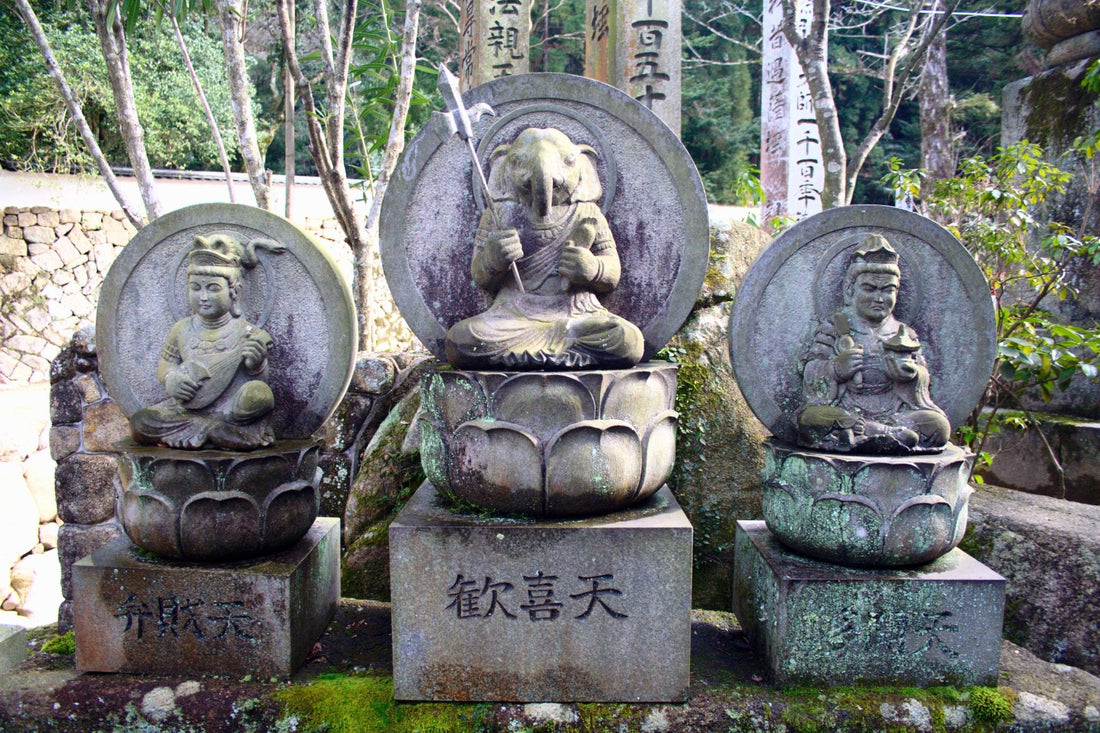
Ganesh: The Divine Elephant in Buddhism and its Spiritual Integration
Share
Introduction:
Ganesh, the beloved elephant-like Hindu deity, embodies a symbolism rich in meanings ranging from wisdom to protection. However, Ganesh’s influence is not limited to the framework of Hinduism; he has seamlessly woven himself into the fabric of Buddhism, adopting a new identity and bringing a unique spiritual dimension. In this in-depth article, we will delve into Ganesh’s cross-cultural journey in Buddhism, exploring his role, symbolism, and integration into the various Buddhist schools.
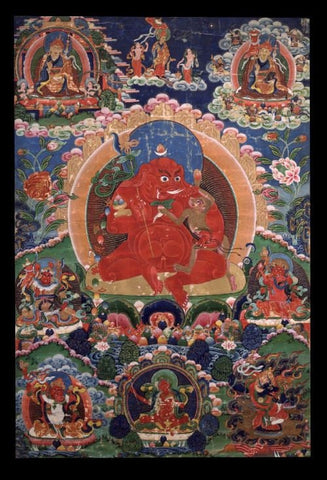
1) Ganesh: An Enlightening Insight:
Ganesh, or Ganesha, remains a revered figure in Hinduism, being the son of Shiva and Parvati. Endowed with an elephant's head and a human body, he is universally recognized as the god of wisdom, intelligence, and prosperity. His attribute as the "breaker of obstacles" has made him a major symbol in Hindu ritual practices and festivities.
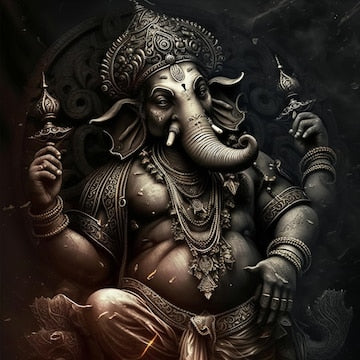
2) Ganesh's Integration into Buddhism:
The story of Ganesh within Buddhism evokes a fascinating process of religious syncretism. The regions where Hindu and Buddhist beliefs intertwined saw the emergence of a unique form of Ganesh worship, subtly merging the teachings of the two traditions. One legend tells of a fight between the two Ganeshes, which the Buddhist won and tore off the Hindu's head to replace his own. More seriously, Ganesh was incorporated into Buddhism through its tantric form, which originated in Odisha in India and then traveled first to Nepal via Indian traders, and to China. Later, Ganesh found an interesting place in the Shingon and Tendai forms of Japanese Buddhism, which we will discuss in more detail.
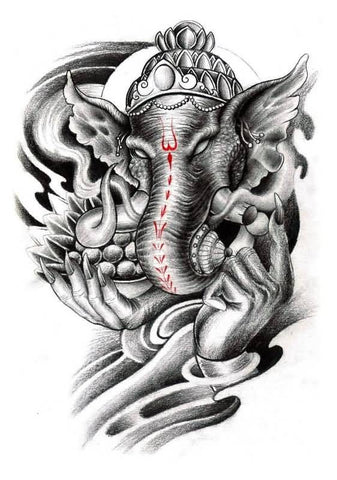
3) Iconographic and Symbolic Metamorphosis:
Ganesh's iconography has adapted to the Buddhist context to reflect the specific values and concepts of this philosophy. His elephant body embodies the strength and endurance needed to overcome spiritual obstacles, while his multiple arms symbolize efficiency and agility in the quest for enlightenment. Apart from Tibet, the deity has left few traces in China, probably swallowed up by the Chinese esoteric Tangmi current which gave way to Tibetan esoteric Buddhism later in the country.
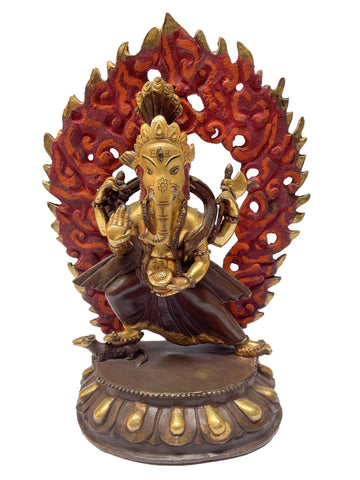
4) Ganesh through Buddhist Traditions:
a. Mahayana Buddhism:
Ganesh sometimes finds his place as a form of bodhisattva, an enlightened being who works for the good of others. His wisdom and benevolence are honored by Mahayana practitioners who seek his protection and enlightenment.
b. Tantric Buddhism:
In tantric practices, Ganesh is often seen as the guardian of sacred gates, opening the way to esoteric teachings and higher levels of consciousness.
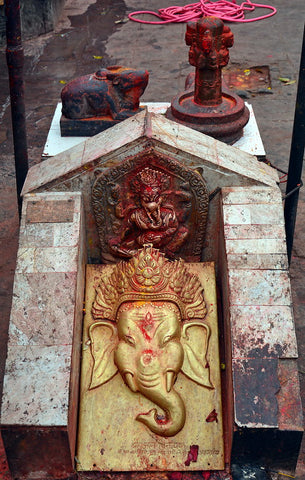
5) Symbolic Harmony with Other Buddhist Deities:
Ganesh's presence in Buddhism draws symbolic connections with other Buddhist deities. For example, his ability to dispel obstacles resonates with the goddess of compassion, Tara.
The divine role of wealth is reminiscent of the Taoist form of the 10th century Chinese monk Milofo, who probably took the place of Ganesh in this function.

6) Enlightened Ritual and Devotion:
The veneration of Ganesh in Buddhism is expressed through a variety of rituals, meditations, and offerings. Practitioners aspire to cultivate the qualities embodied by Ganesh: wisdom, determination, and spiritual protection.
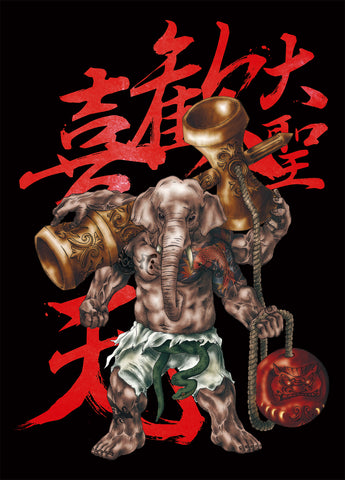
7) Ganesh in Japanese Buddhism:
In Japan, Ganesh is known as Shōten or Kangiten. His cult was introduced by Kukai (Kōbō-Daishi), the founder of the Shingon esoteric Buddhist school. The figure of Kangiten is often depicted in union with his consort, symbolizing the union of masculine and feminine energies.
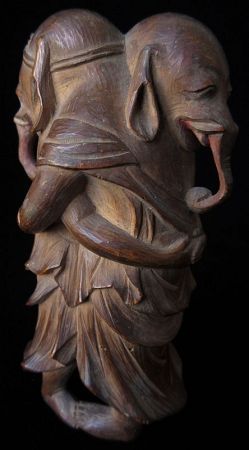
Today, 250 Japanese temples practice Kangiten worship, the most active center is Hozanji Temple, located on the eastern slope of the eastern slope of Mount Ikoma outside Osaka City, founded by the charismatic 17th century Japanese monk Tankai known as Hozan (1629-1716).
A legend surrounds the origin of the temple's foundation. Hozan, in search of supernatural powers or "siddhis", failed because of the insurmountable obstacles posed by Kangiten. Around 1678, the master of Tankai revealed to him the existence of Mount Ikoma, a miraculous place that was neither dream nor reality. On these revelations, Hozan, in order to appease the elephant god, made an idol of Kangiten to make him the guardian of the place, imploring him that in return the divinity would protect him and help him achieve the siddhis.
The construction of this temple dates back to around 1680.
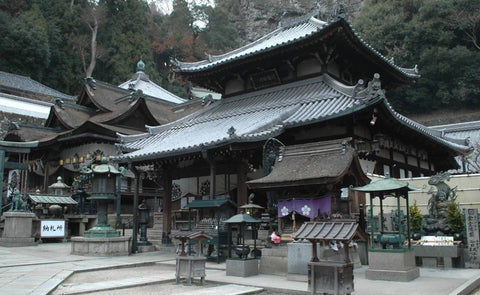
Kangiten is considered to be endowed with great power, regarded as the protector of temples, and worshipped commonly by players, actors, geisha, and people of the so-called floating world. Due to Kangiten's esoteric sexual nature, his image is often masked. Mantras are often prescribed in ritual texts to appease the deity and even to drive away this obstacle-maker. Rice wine (sake), radishes (daikon), and "bliss-buns" (kangi-dan), a fried confection filled with red bean paste that is based on the modak offered to Ganesha, are offered to the god.
Conclusion:
Ganesh, the divine elephant, exemplifies the astonishing ability of spiritual traditions to transcend boundaries and adapt to meet the spiritual needs of beings. His inclusion in Buddhism underscores the profound unity that lies beyond religious distinctions. By honoring Ganesh, Buddhists celebrate the convergence of teachings and the common quest for ultimate truth. Such spiritual integration reminds us that love, wisdom, and protection are universal aspirations shared by all beings seeking inner light.

2 comments
Merci c’est exactement ce à quoi j’aspire.
Muchas gracias por compartir explicación sobre Ganesha.
Unidad!!